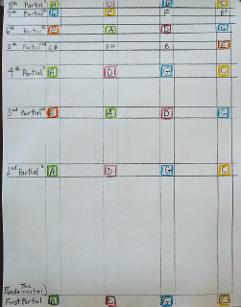When you are learning to play in the upper registers of the cello, teach yourself the natural harmonics, their pitches and locations and this will give you a framework for playing in the upper registers.
First, you must understand the difference between a natural harmonic and an artificial harmonic.
Any harmonic that is below the octave harmonic (and by that I mean any harmonic that is in first position through 4th position) is called an artificial harmonic.
All of the artificial harmonics, mirror all the natural harmonics. You can test that out by playing 1/3 of the string from the bridge and then 1/3 of the string from the nut or 1/4 of the string etc. The only difference between natural and artificial is if you press down the string to play a natural harmonic (and don't play it as a harmonic) it will give you the same pitch, whereas artificial harmonics give you a different pitch if you press the string all the way down to the fingerboard. When you are reading music that calls for an artificial harmonic, the note will be diamond shaped to show you where it is located (rather than telling you the pitch). With natural harmonics, you'll see the correct pitch but the note will have a zero over it.
The first 8 partials are the natural harmonics: the open string (which is called the fundamental or the first partial), the octave harmonic which is the second partial and then 6 more harmonics that are located between the octave harmonic and the bridge. (There are more harmonics/partials but these are way past the fingerboard so are not really used)
Here is the sequence of natural harmonics (which are also called "partials"):
1 Open String
2 Octave harmonic
3 1/3 of the string from the bridge
4 1/4 of the string from the bridge
5 1/5 of the string from the bridge.
6 1/6 of the string from the bridge
7 1/7 of the string from the bridge
8 1/8 of the string from the bridge
Place 3 "Post-its" on your cello to start learning the 8 partials.
Place them at partials 2, 3 and 4 as shown in the video below.
You should also notice that the 3rd partial sounds a perfect 5th above the octave harmonic and the 4th partial sounds a perfect 4th above the 3rd partial. You can also think of the 4th partial as sounding two octaves above the open string.
Here's a video to show you how to practice learning these notes.
Print out the file below in Black and White and fill in with colors, notes and fingerings in whichever way helps you to learn.

|
Chart 8 Partials.pdf Size : 2463.563 Kb Type : pdf |

Here's Part 2 to help you learn more solidly.